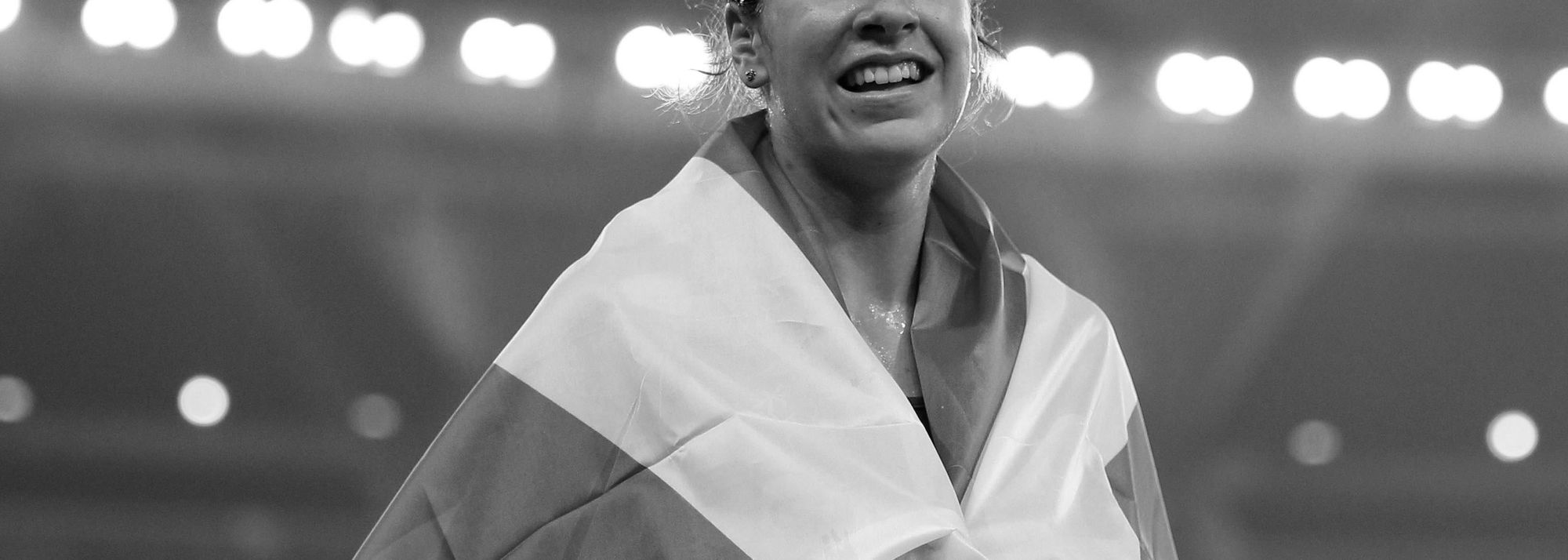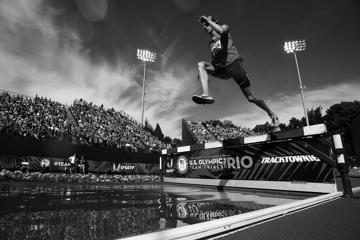Stephanie Twell
by Steph Twell
As a junior, the world is your oyster. You want to make every international team, be at the front of every race, and no matter how fast run you run you always want to go faster.
When I look back, I realise what a serious athlete I was at such a young age. I wanted to be the best in my club, then the best in my country, then the best in Europe.
At times, endurance running can be a lonely sport, but one thing that really motivated me was making internationals, travelling, meeting new people and pulling on the British vest as part of a team.
There was never an off-season. It was track to cross-country to track.
Between 2006 and 2008, I won the European U20 cross country title three times, and in 2008 I won the World U20 1500m title. That summer, I also competed at my first Olympics at the age of 19.
Making those Games had been a vicarious by-product of London being awarded the 2012 Olympics. As a teenager, I was totally sold on that dream and when I watched the inspirational promo videos I felt I’d be a part of it. My attitude was to shoot for the moon.
I wanted to be an Olympic finalist. In Paula Radcliffe, Jo Pavey and Kelly Holmes, I had athletes who had shown me the pathway. Why not me?
But the transition to the senior ranks is a tough one.
When you’re known to win as a teenager, you become a little bit addicted to that feeling and set that expectation of yourself. I’m a personality who always wanted to test myself, who always wanted more.
I realise now that you have to be content with your performances. When you have a good run, you’ve got to be in the present, enjoy the moment, and reflect on the work that got you there.
Because it can all be taken away in an instant.
In February 2011, I broke my leg during a cross-country race in Hanut, Belgium. The previous summer, at the age of 20, I had run 4:02 for 1500m and 14:54 for 5000m but it would be four years before I made another international team.
I was leading the race when it happened. I was running through a ditch, about a metre wide, when my foot got caught in really sticky mud. I twisted my ankle and my shoe came off, then I heard this break.
I hit the ground immediately.
It turned out to be a 10cm spiral fracture of my fibula, while my medial malleolus (ankle bone) was also badly damaged.
I could feel the blood rushing through the area, and a spectator came over and tried to pick me up. I said, ‘don’t touch me, it’s broken’ but something got lost in translation and it took him a while to realise how bad I was.
The people there acted fast, pulling the tape around me so the field could bypass as I lay there, and next thing I knew I was in a local hospital. That night, I awoke to a flashback – my brain had stored a photographic memory of a moment I’d rather forget.
It was about seven months before I could run again. First I had to learn to walk. I had two surgeries, but the bone healed up well and the only lingering issue was with all the scar tissue in the area. In the years that followed, it meant I couldn’t quite get up on my toes the same way and couldn't complete the quality speed work required for the 1500m.
That was the start of my transition up the distances.
In 2012, I got a stress response in the same foot which ended my chances of competing at the London Olympics, but rather than trying to mull over that missed opportunity I embraced the Games. I knew I was young, that this was just a bump in the road, so I was in the stadium on Super Saturday, drawing inspiration for the years ahead.
Having superseded myself as a junior, those injuries had brought me back in line with my peers and on a more normal age-related progression.
But to move forward I had to re-assess my goals. I went from being Steph Twell who could run 4:02 for 1500m to Steph Twell who was struggling to break 16 minutes for 5000m at the Commonwealth Games.
I knew what my mind wanted to do, but my body had to catch up and it took a long time to figure that out. It was tough, but I was essentially starting a new career and evaluating who was around to support me, and I got key help from a new sponsor: New Balance.
The injury forced me to understand more about my environment. Even though it was a freak accident, having one impact bone injury made me more careful to look after my bone health and manage my training better. It was no longer about every session being fast, but every session being smart.
That’s my approach now as I transition towards to the roads, a terrain I’ve always loved.
I grew up racing the national road relays for Aldershot, Farnham and District and my long-time coach, Mick Woods, always told me I had a short, dynamic stride that would suit the marathon. Even though I was quick, he said I was more of a diesel engine.
I’m definitely not done with the track, but the way the sport has gone makes this a more viable option. In recent years I found athletics at the top level didn’t support athletes who are running 14:45-15:00 for 5000m, and I often found myself in no-man’s land in races.
I won a bronze medal over 5000m at the Europeans in 2016, which was great, but in order to be competitive with the world's best as a clean athlete I knew I had to improve my aerobic engine.
In 2018 I decided to give the marathon a try.
It was a short preparation. In September that year I raced the Fifth Avenue Mile in New York, then I got married and within two months I was on the start line in Valencia for my first try over 26.2 miles.
I averaged 68 miles a week on the build-up, well below the average for elites, but the key for me was to have a positive experience – and I did. I crossed the line in 2:30:14 with a smile on my face.
Last year, I took a bigger step forward, running a 2:26:40 marathon in Frankfurt and an Olympic 10,000m qualifier of 31:08 in London.
That means I’ve got the standard in two events for Tokyo, but because they take place on the same day I’ll have to choose between them. I’m not sure which way I’ll go, but this weekend should inform my decision.
My build-up for the London Marathon hasn’t been ideal, with plantar fasciitis costing me time and limiting my mileage. If the race had gone ahead in April I’d be targeting 2:24, but now the main goal will be to have a low-risk race and come through it healthy, to swallow my pride and manage my expectations.
That’s strange to say because I’m extremely competitive, but it’s been my hardest build-up so my mentality is to just be optimistic about the opportunity – to learn a little more in what is only my third marathon.
I’ve been coaching myself for the past 18 months, going with my own intuition when it comes to tailoring training sessions. My physiologist Charlie Pedlar offers input and I also spoke to British marathoners Mara Yamauchi and Callum Hawkins about training, getting a feel for different approaches.
I'm also considering reaching out to elite groups to train with and thinking about bringing an assistant coach on board to support me in my decision-making process. I've learnt a lot about how to do it on my own, but I'm also open to being collaborative.
What I’m learning about the marathon is you invest so much for one race that your hand is often forced. If I got an injury when I was younger, I’d rest or aqua-jog for a bit and would get annoyed that my body wasn’t working. But there would always be another race soon.
That’s not the case in the marathon, so you just have to go with the flow.
As a teenager, cross-training was almost a taboo word, a sign that I was injured, but now I’ve learned to embrace it as part of the preparation and to be more holistic. I know with this approach I'll have a long career ahead of me, but it's a lesson you only learn through experience.
What would I say to young athletes going through that transition?
I'd tell them to never, ever give up on yourself. Trust in your determination and know you’re not alone in your pathway, whether it's at the high or low points of your career. The running community has so much to offer so be open to seeking advice from those who’ve gone before you.
But above all, love what you do, whether it’s performance-related or not.
That’s the key for staying in this sport. You’ve got to fall in love with your future, and as I transition to this next phase of my career that's what I've done.
It’s why I’m more excited than ever about the road ahead.








